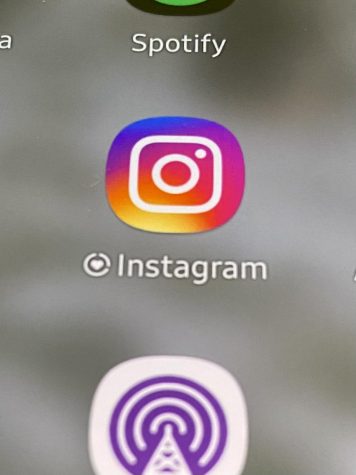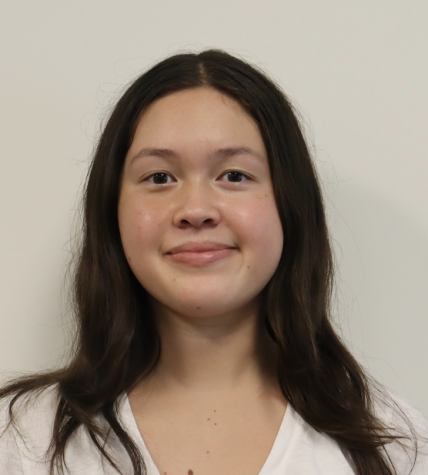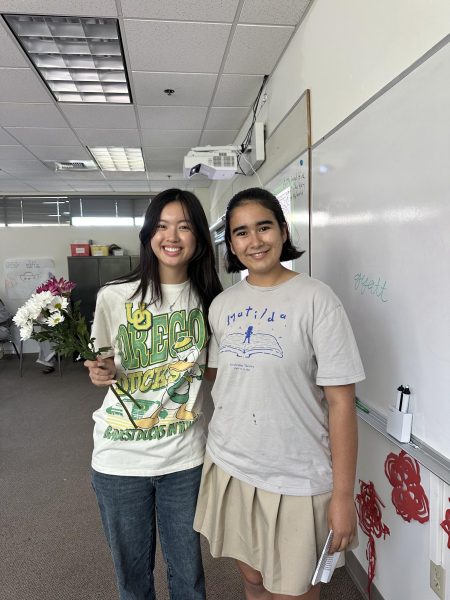Opinion: What Quarantine Taught Me About Social Media
After a long and tiring day of school, I finally settle myself onto my beanbag, wrapped in a yellow fuzzy blanket. Immediately I can feel myself soften into the curves and squish of the cushion. I grab my phone, open it, and swipe over to Instagram’s familiar sunset ombre. Click. As the app expands into my screen, boxes of colors and bright pictures greet my eyes. The warm glow from my phone seems to broaden into the whole room. I feel bundled and safe, protected when I open the app.
I scroll through blocks of posts. My finger energetically pulls my hand along, tapping down and down. I see classmates, family members, celebrities. I only stop so long as to quickly look at a picture, then I tap down to the next. When I see a news notification about COVID-19’s rapid spread, I quickly swipe past it. As I continue scrolling, I see satisfying art videos, tiny meals prepped for a local chipmunk, workout instructors with flexed abs, 10 layer chocolate cakes with colorful frosting. Everything around me seems to evaporate, and it’s just me and the pixels. Minutes and hours fade quietly away.

At the beginning of quarantine, I had a routine I would follow every afternoon. Exhausted from a day of online school, I would settle onto my beanbag and slip away from the monotony of quarantine life. But as the weeks dragged on, I vaguely noticed how my social media routine was seeping into other parts of my day. Rather than being contained to the afternoon, it oozed into almost every single hour of the day. During a geometry lecture, my phone seemed to pull my hand towards it, and I couldn’t help but glance at a few posts. Once we were dismissed for lunch, I had my phone handy to start scrolling. It no longer felt like a chosen and purposeful respite; instead, it felt automatic and required for getting through quarantine and remote learning.
But as each week passed, I had noticed how my weekly screen time reports were shooting upwards. Screen time filled hours of my time. I also noticed how I wasn’t talking to friends as much, and how I felt disconnected from others in general. I could directly see how as my screen time increased, so did my lack of connection. I decided I would go all in and completely quit social media.
During the time that I wasn’t on social media, I realized very quickly it wasn’t going to last long. I constantly felt the urge to check my feed. My fingers seemed restless, wanting to hold the warmth of my phone. My mind was also trying to attach itself to something, constantly scavenging for something interesting or exciting. Unsurprisingly, I was back in two days.
After my first failed attempt at limiting social media, I decided I would carefully reincorporate it back into my life. I needed a better plan than Cold Turkey Quitting. I knew I was no match for the social media tsunami that could easily pull me under its tow of colors and pictures, so I put an app timer on it: 30 minutes a day. As soon as that time was up, a message would jump on my screen, “Goodbye for today.” My whole body would tighten at that message, and my fingers clenched, wanting more. My Instagram app turned gray and white, and when I jabbed at it in desperation, nothing would happen. Reluctantly, I moved on with the day.
Day one was rough, but by day three, things became a bit better. With every new day, my gravitation towards the phone diminished slightly. I would still nestle into my beanbag each afternoon, but instead with a book in hand. I started writing. I played more guitar. I reached out to friends. And I shaved my timer down each week. Gradually it became 15 minutes, then 10, finally settling at a comfortable 7. Most days I don’t even use the full time. Without it being consuming or mechanical, I can still scroll through and explore social media. I can enjoy it, but also savor other parts of my life.
Looking back, I realize how I had initially used my social media apps as a way to cope with the stress of a pandemic and the isolation of quarantining. But as time progressed, these apps, as they’re meant to, only grew addictive, eventually exacerbating my feelings of isolation. I was seeking a distraction from the pandemic, an escape, but that meant creeping farther into myself and social media, away from my family and friends. What I needed, and still need, is to reach out to others rather than treating a phone as my only support.

Katie is a senior, and this is her fifth year on Spyglass and third year as an Editor. In her free time, she loves playing guitar, writing, and doing calligraphy.

















![Dr. Zanita Kelly, Director of Lower and Middle School, pictured above, and the rest of Westridge Administration were instrumental to providing Westridge faculty and staff the support they needed after the Eaton fire. "[Teachers] are part of the community," said Dr. Kelly. "Just like our families and students."](https://westridgespyglass.org/wp-content/uploads/2025/03/dr.-kellyyy-1-e1748143600809.png)













































